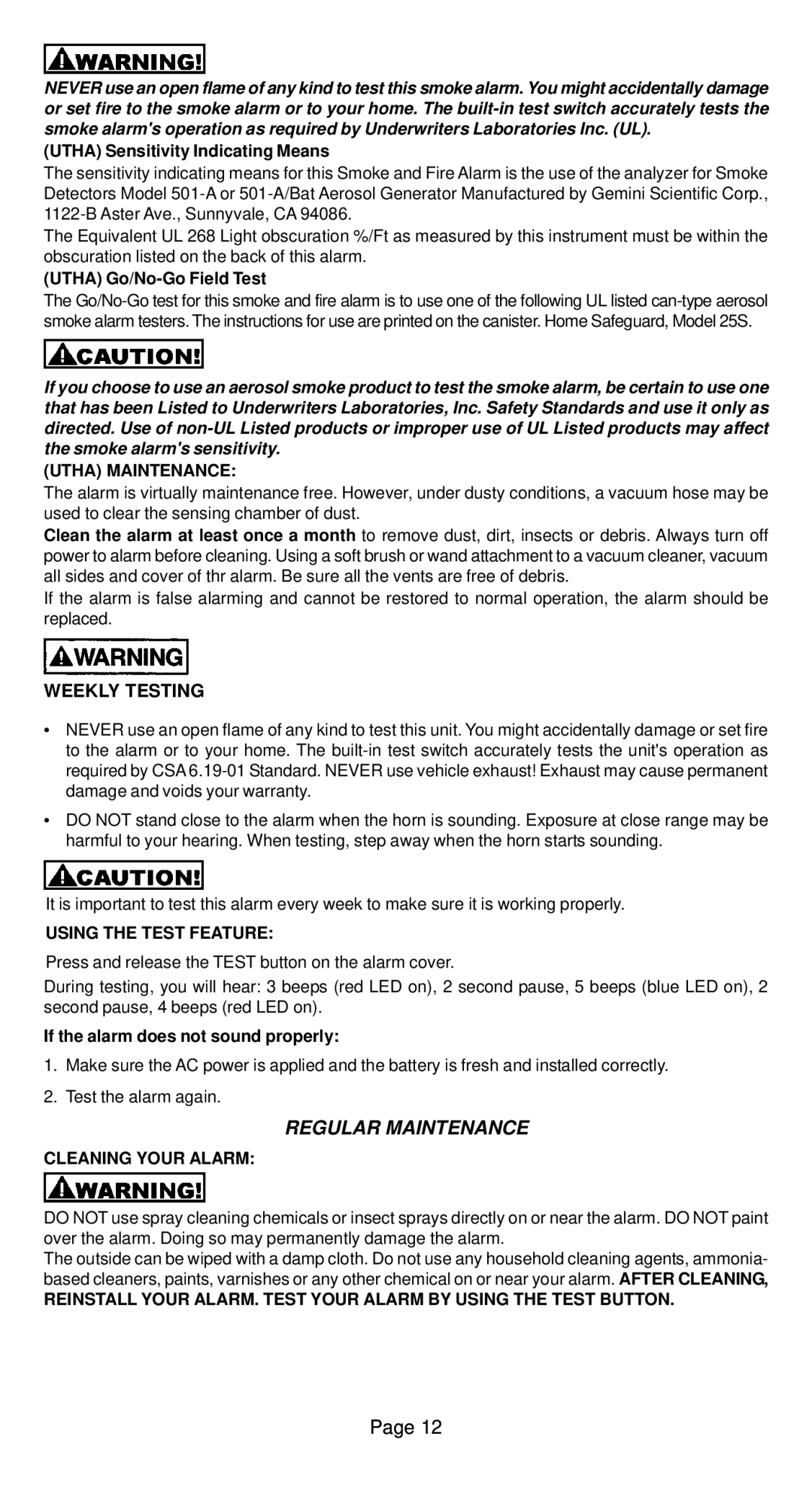MICN109, MICN109L, MICN102, MICN102L specifications
Universal Security Instruments offers a versatile lineup of carbon monoxide and smoke detectors that provide essential safety features for any home or office environment. Among their popular models are the MICN102, MICN109L, MICN109, and MICN102L, each designed with advanced technology to ensure effective monitoring and protection against fire and carbon monoxide threats.The MICN102 is a dual-sensor alarm, combining both smoke and carbon monoxide detection in a single unit. This compact device features an electrochemical sensor for precise CO detection, as well as an ionization smoke sensor that responds quickly to fast-flaming fires. With a loud alarm of 85 decibels, homeowners can rely on timely notifications in the event of emergencies. The MICN102 is also equipped with a test and silence button, allowing for easy routine checks and the ability to silence false alarms.
The MICN109L is an enhanced model that includes a voice alert feature. This model not only emits a loud alarm but also provides clear spoken alerts, indicating whether smoke or carbon monoxide has been detected, significantly improving user awareness and response times. With its user-friendly design, the MICN109L also has an easy-to-read display that shows the current CO levels, allowing users to stay informed about their indoor air quality.
The MICN109 shares many of the same core features found in the MICN109L, including the dual-sensor technology and 85-decibel alarm, but does not include the voice alert function. This model still offers reliable and efficient monitoring, making it an excellent choice for individuals looking for solid protection without additional features.
Lastly, the MICN102L combines the effective detection capabilities of the MICN102 with voice alerts similar to those in the MICN109L. This model is particularly beneficial for larger households or spaces where quick identification of the type of threat may be crucial. Features such as battery backup ensure continuous protection even during power outages, while the easy-to-install design allows for swift setup.
Across all models, Universal Security Instruments emphasizes user-friendly operation, reliability, and effective detection, providing peace of mind for families and individuals alike. With their modern design and advanced safety features, these units stand out as trusted guardians against fire and carbon monoxide hazards, reflecting Universal Security Instruments’ commitment to quality and safety.

